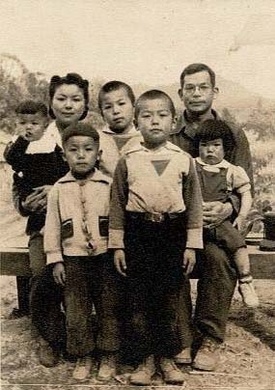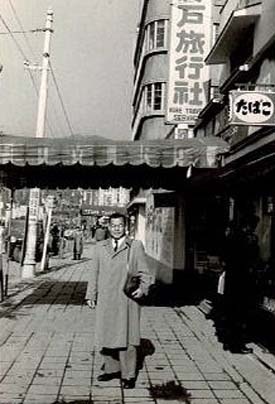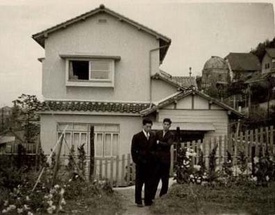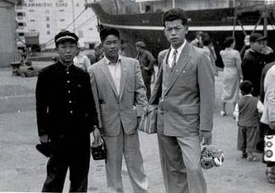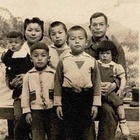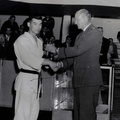At the end of 1945, the Seino family boarded the Gordon ship bound for Yokosuka from Portland, Oregon, and headed for Tsunuki, Kagoshima Prefecture, the hometown of his parents. Their new life in postwar Japan was one of scarcity, with not enough food, and the rural areas still lacking running water, so they had to draw water from a well. Toshiyuki entered the second grade at Tsunuki Elementary School.
"I believe that at Toole Lake, the school only taught Japanese, so when I returned home I immediately started second grade, but Japanese wasn't much of a problem."
There were American public schools in the internment camps across the United States, but in 1943, a national school based on the Japanese education system was built at Tule Lake Isolation Camp using funds from the internees, and education was given in Japanese there. Toshiyuki probably attended that school.
"However, my Japanese wasn't Kagoshima dialect, and they found out I was a second-generation American, so I got bullied a lot."
It is not hard to imagine how cruel the children were to the boy from the country that their country had lost to immediately after the war. However, it wasn't all about losing, and according to his wife Midori, "I heard from old classmates that the ones who bullied the others were stronger."
Matsukichi, who was fluent in both Japanese and English, found work at a US military base about an hour from Tsunuki, and made a living from it for two or three years. After that, he ran a small restaurant in Kagoshima and helped out at a relative's oil refinery, and then he got a job at a travel agency run by an acquaintance in Kobe, and the family moved there. Toshiyuki was 12 years old.
"It was a travel agency (Kobe Travel Agency) that had a small inn attached to it, I believe it was called Satsumakan, and people returning to the United States stayed there while they went through the necessary procedures. At that time, the number of people returning to America was increasing."
According to Hiroyuki Shiode's book "The Political History of Border Crossers: Japanese Immigration and Colonization in the Asia-Pacific Region," after Japan's surrender, nearly 30,000 Japanese Americans returned to the United States from Japan and Okinawa. Toshiyuki's father used his bilingual skills to help these people return to the United States.
Matsukichi then established his own company, which imported nylon stocking materials from America and manufactured and sold them. This was quite a sophisticated business in Japan in the early 1950s. The business seemed to be on track, and Matsukichi built his own house in Rokko.
Meanwhile, Toshiyuki graduated from Kobe Municipal Takajo Junior High School and then Kobe Commercial High School in 1956. "My father told me, 'If that's what you want to do, you can go to university in Japan,' but I wanted to go back to America, where I was born. When we moved to Kobe, I spoke with a Kagoshima accent, so I was ambushed on the way home from school and got into fights, and I was bullied quite a bit in Kobe. So when I was in high school, I started wanting to go back to America."
After studying English at the YMCA in Kobe with his cousin for about a year, he decided to renounce his Japanese citizenship and return to the United States.
"When I told my father that I wanted to go to America, he said that I was 17 and not yet an adult, so I needed someone to sponsor me." Fortunately, a friend of his father's in Denver, Colorado agreed to sponsor him, and the 17-year-old Toshiyuki boarded an immigrant ship bound for Brazil via America.
"I went with my American-born cousin and his wife, sharing a room. His sister and her husband lived in Denver. Japan was poor at the time, so my cousins suggested that I go there and help out, and that's why I went to the United States."
© 2022 Masako Miki


